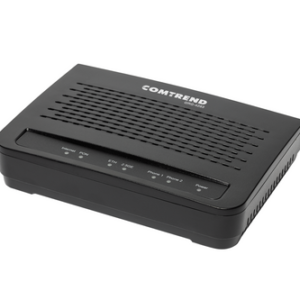Features:
- Temperature-hardened (-40°C to +65°C) with for temperature-challenged or spaceconstrained locations
- 32 x 1/10/25GbE and 4 x 100/200GbE fixed ports
- L1/L2/L3 low latency switching
- Service isolation using FlexEthernet (FlexE)
- Carrier Ethernet, IP routing, SR-MPLS, and SRv6 Ready
- Hardware-assisted routing and switching OAM scaled to deliver 25GbE services with guaranteed SLA differentiation
- Secure Zero-Touch Provisioning (SZTP) for rapid, secure, and errorfree turn-up of services
- Advanced synchronization, including built-in GNSS receiver
- Built-in RFC 2544 and ITU-T Y.1564 SAT with 100 Gb/s traffic generation and analysis
- SDN-ready next generation management including support for protocols such as NETCONF/YANG and gNMI/gRPC
- Ciena’s MCP multi-layer support for end-to-end network management control and planning
- Redundant AC or DC power
Ciena’s 5164 Router is purpose-built for 5G networks that converge 4G/5G fronthaul, midhaul, and backhaul (xHaul) networks onto a common, simpler infrastructure. With dense 1/10/25GbE to 100/200GbE aggregation and support for both hard network slicing (FlexEthernet) and soft network slicing (Segment Routing), the 5164 is the ideal platform to simplify and de-risk the unique 4G to 5G journeys of mobile and wholesale operators.
The industry drives toward converged xHaul transport networks
Continued annual growth in 4G and 5G Radio Access Network (RAN) bandwidth demand is driving a change in the mix of connections and services, from 1GbE aggregation to 10GbE, and 10/25GbE aggregation to 100/200GbE. This ongoing growth will continue as network operators, mobile, and wholesalers embark on their unique 4G to 5G journeys—resulting in substantial upgrades to their xHaul networks—while traditional Mobile Network Operators (MNOs) modernize their transport networks to support the vastly improved end-to-end performance that is the promise of 5G.
One key aspect of 5G networks, besides the substantial improvements in capacity and latency, is the decoupling of the Remote Radio Unit (RRU), also referred to as Remote Radio Head (RRH), from the Baseband Unit (BBU) in a mobile macro cell. This results in a fronthaul transport network between the RRU and the centralized BBUs that will then be virtualized, using Commercial Off-The-Shelf Centralized Unit (CU) (COTS) servers. This new architecture is referred to as Centralized/Cloud (C-RAN).
The BBU itself will be further disaggregated into a Centralized Unit (CU) and Distributed Unit (DU), which results in a midhaul transport network between them. By converging 4G/5G fronthaul, 5G midhaul, and 4G/5G backhaul, network infrastructure cost and complexity are optimized.
C-RAN enables significant reductions in power consumption, footprint, and complexity deployed at 4G/5G cell sites. The Common Public Radio Interface (CPRI) for 4G LTE C-RAN is highly inefficient from a fronthaul bandwidth perspective. For 5G NR RAN, available capacity will be significantly higher than 4G LTE, particularly with High Order Multiple-Input MultipleOutput (MIMO) antenna deployments. Several sublayers of the 5G NR RAN functions will be decomposed and virtualized over x86 COTS servers, which will have a major impact on the required xHaul network performance to deliver upon the full promise of 5G.









































